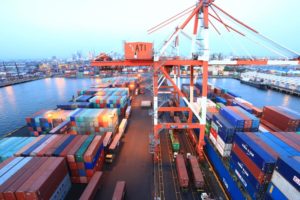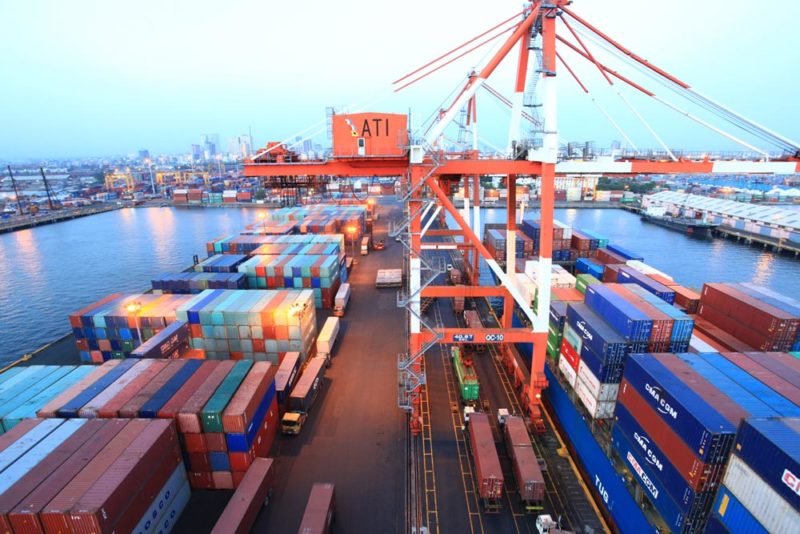
Record cargo volumes handled by its international gateway ports in Manila and Batangas boosted the first semester results of listed port operator Asian Terminals Inc. (ATI).
In a disclosure to the Philippine Stock Exchange on Monday, ATI reported a net income of P1.40 billion for the first six months, up by 18.2% from P1.19 billion a year earlier.
Revenues reached P5.70 billion, 12.4% higher than P5.07 billion during the same period in 2017, on account of higher international containerized cargoes handled by the Manila South Harbor (MSH) and Batangas Container Terminal (BCT) as well as higher containers, domestic RoRo and passengers handled by Batangas Port, reflective of the resilience of the Philippine economy.
From January to June, MSH handled more than 560,000 TEUs (twenty-foot equivalent units) of foreign shipment, its highest volume over a six-month period, a nearly 5% growth compared to the first half of 2017.
In May, MSH booked an all-time high single-month volume of nearly 105,000 TEUs, followed by over 103,000 TEUs in June, for a back-to-back 100,000-TEU performance.
BCT stepped up its role as trade facilitator in Calabarzon (Cavite, Laguna, Batangas, Rizal and Quezon), offering competitive market connectivity to major shippers and helping decongest Manila’s roads, ATI said.
BCT handled more than 110,000 TEUs from January to June this year, higher by over 18% than last year, keeping it on pace of exceeding its 2017 record throughput of nearly 200,000 TEUs. This meant reducing over 55,000 truck trips along Metro Manila roads, with more consignees routing cargoes via Calabarzon’s preferred gateway port.
“Despite handling growing volumes, our international container ports in Manila and Batangas are performing at optimum production and utilization levels heading into the ‘ber’ months, the peak season for shipments,” ATI executive vice president William Khoury, said.
“We have capacity and are continuously increasing our capabilities to handle future growth,” Khoury added.
In line with its investment commitment with the Philippine Ports Authority, ATI is spending approximately P8 billion this year to further boost the efficiency and capacity of its ports.
Among others, these investment include: the deployment of two new quay cranes last April and continuous yard expansion projects at MSH; the near completion of Batangas Port’s multi-level car storage facility; and the delivery of two additional quay cranes and four more rubber-tired gantry cranes at BCT by fourth quarter alongside the ongoing expansion of BCT’s berth and yard facilities.





